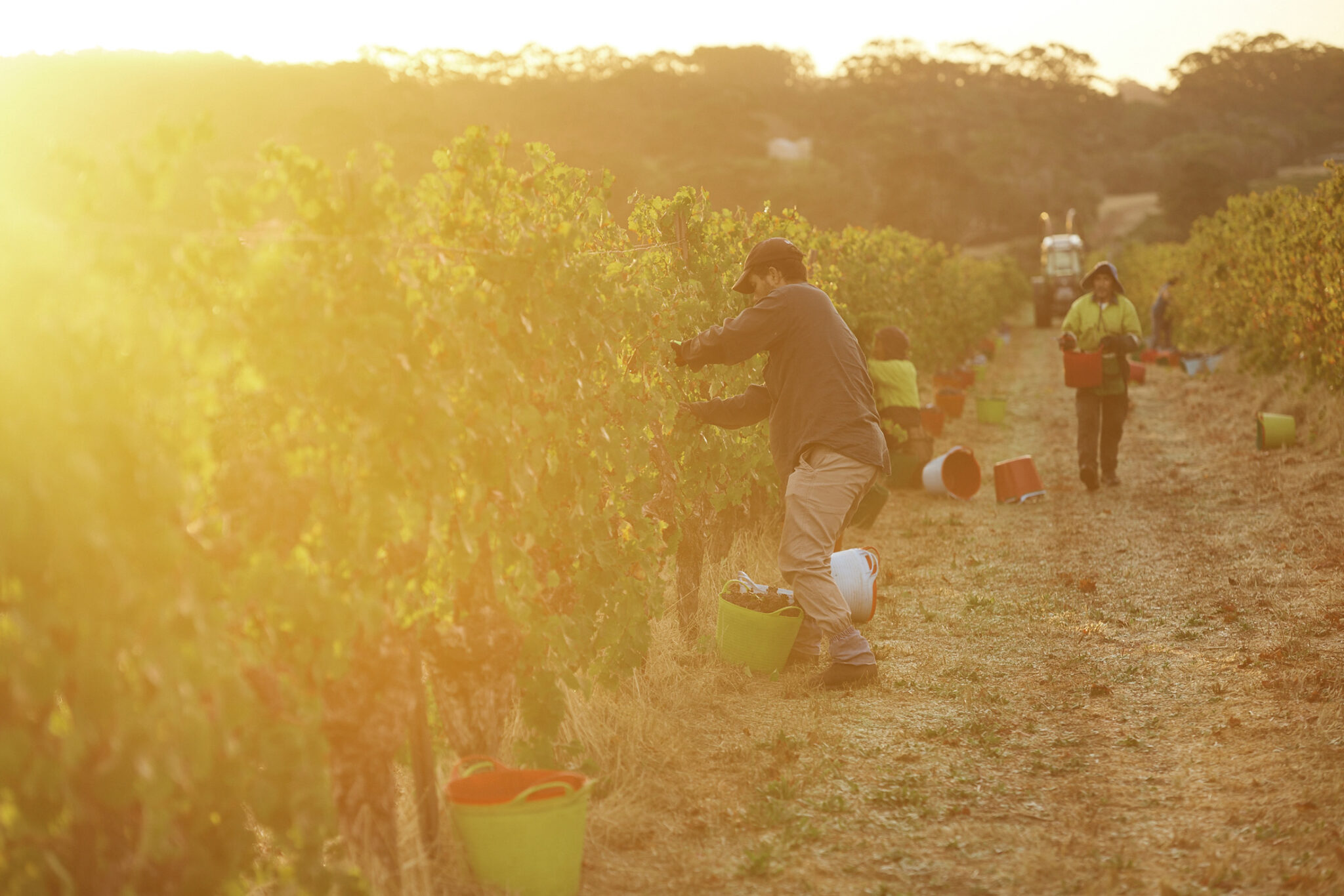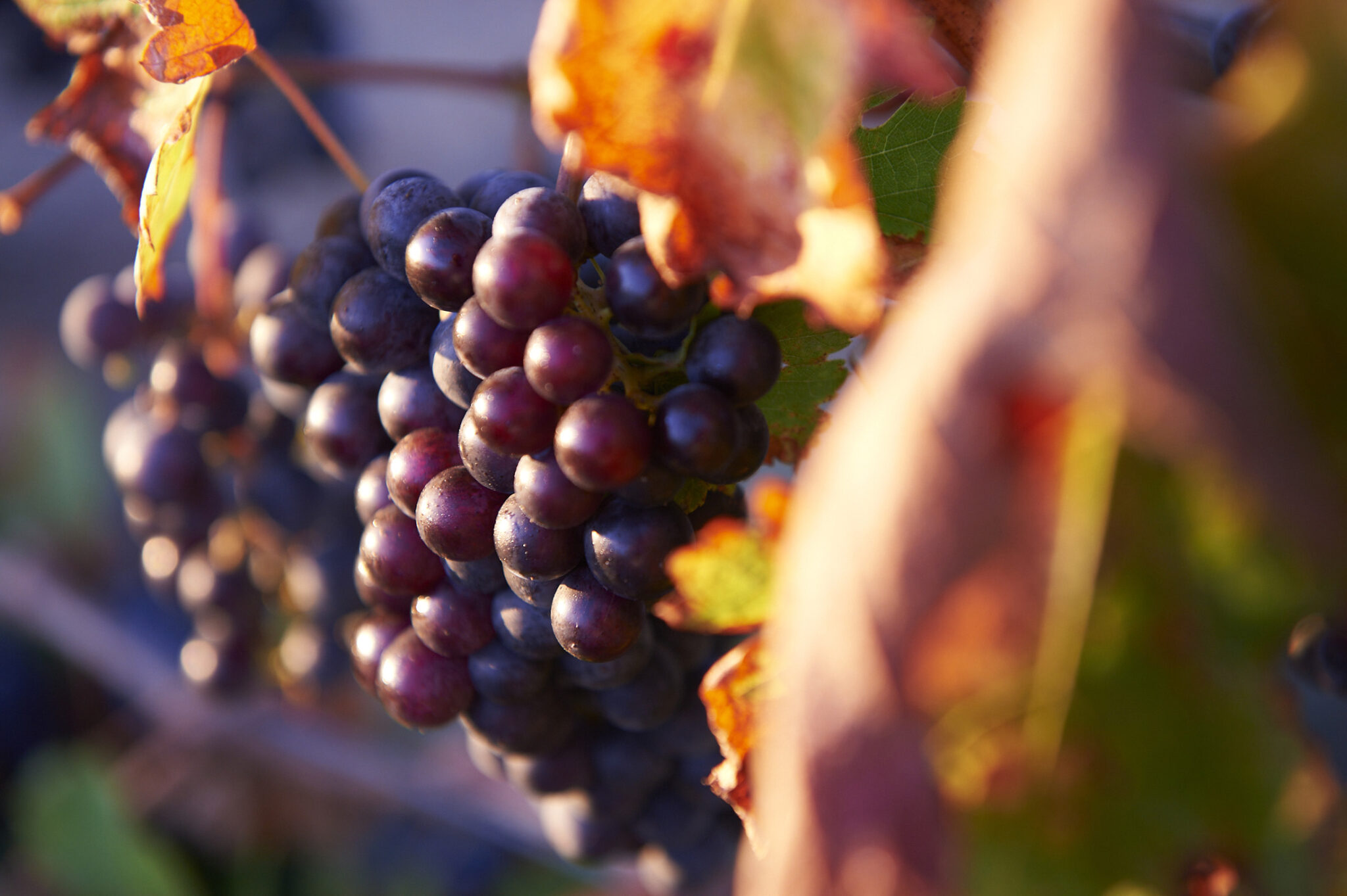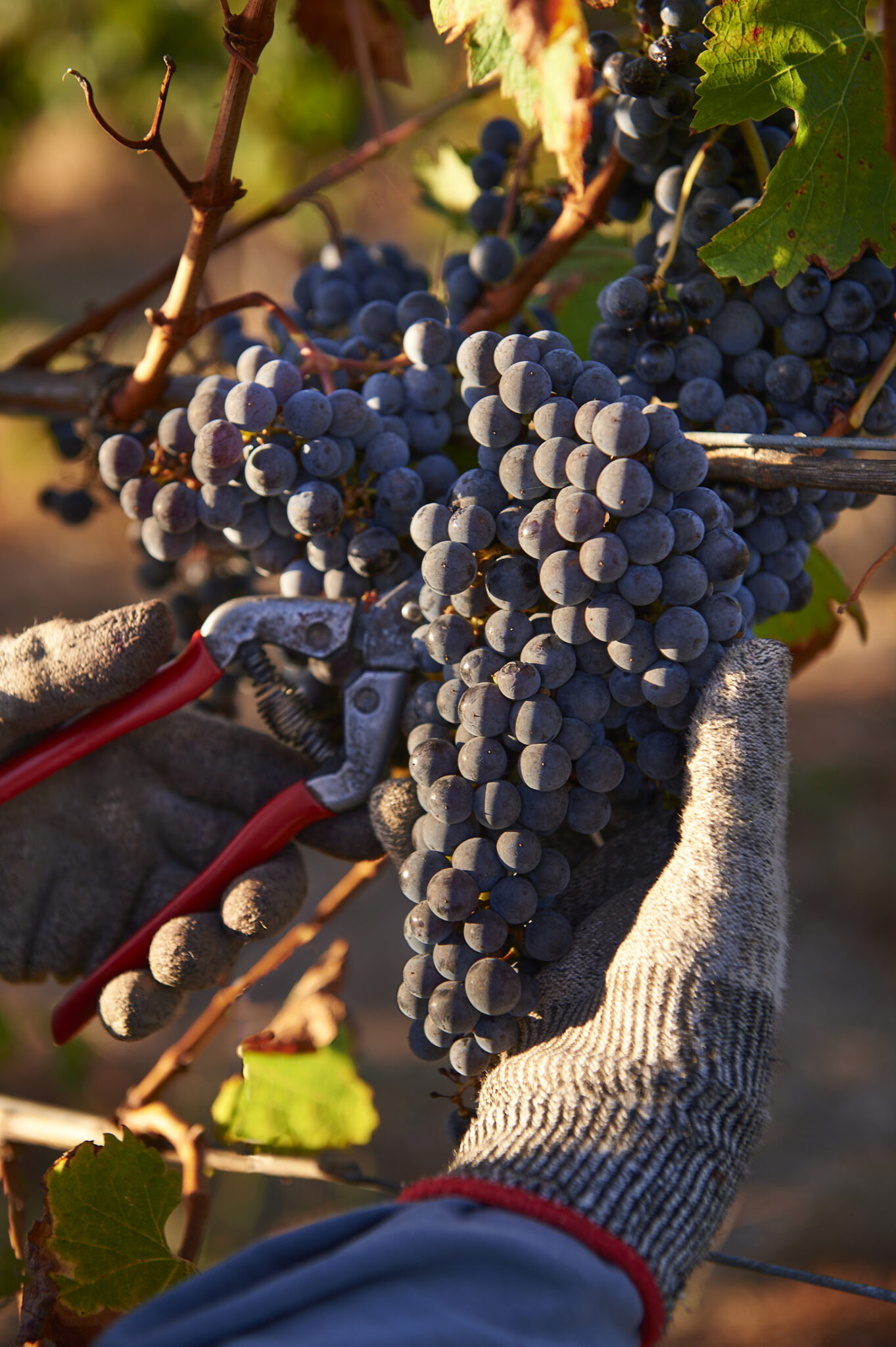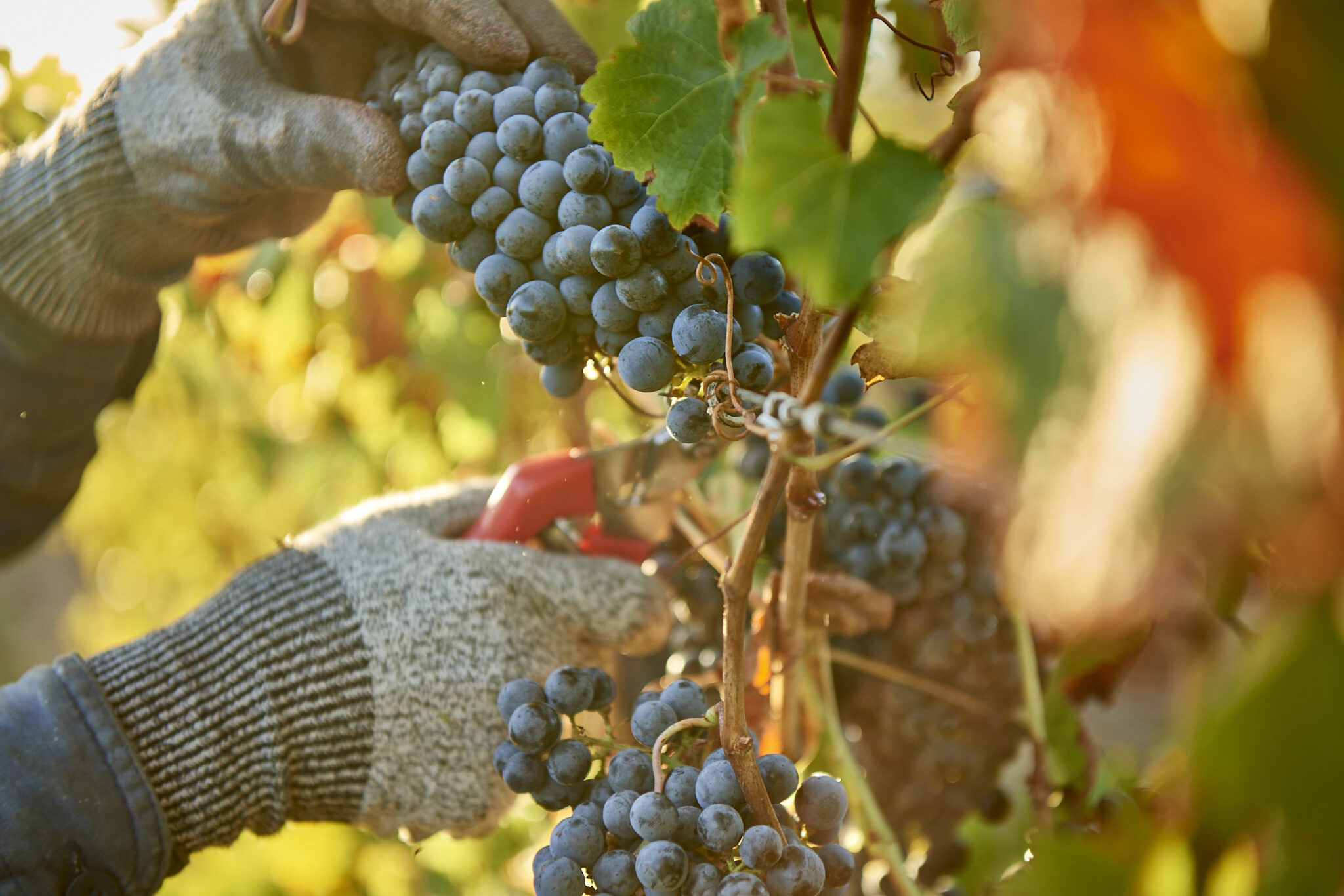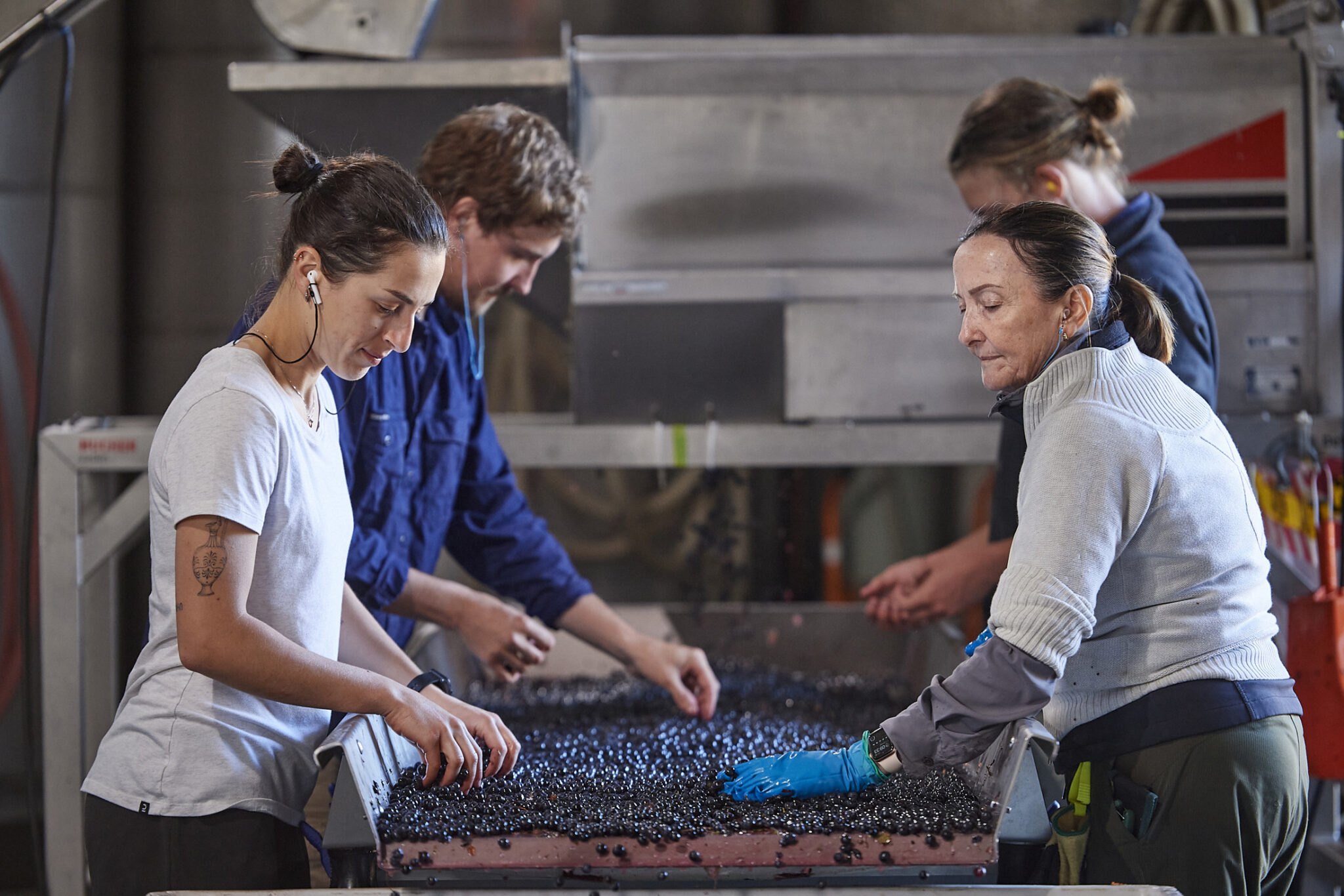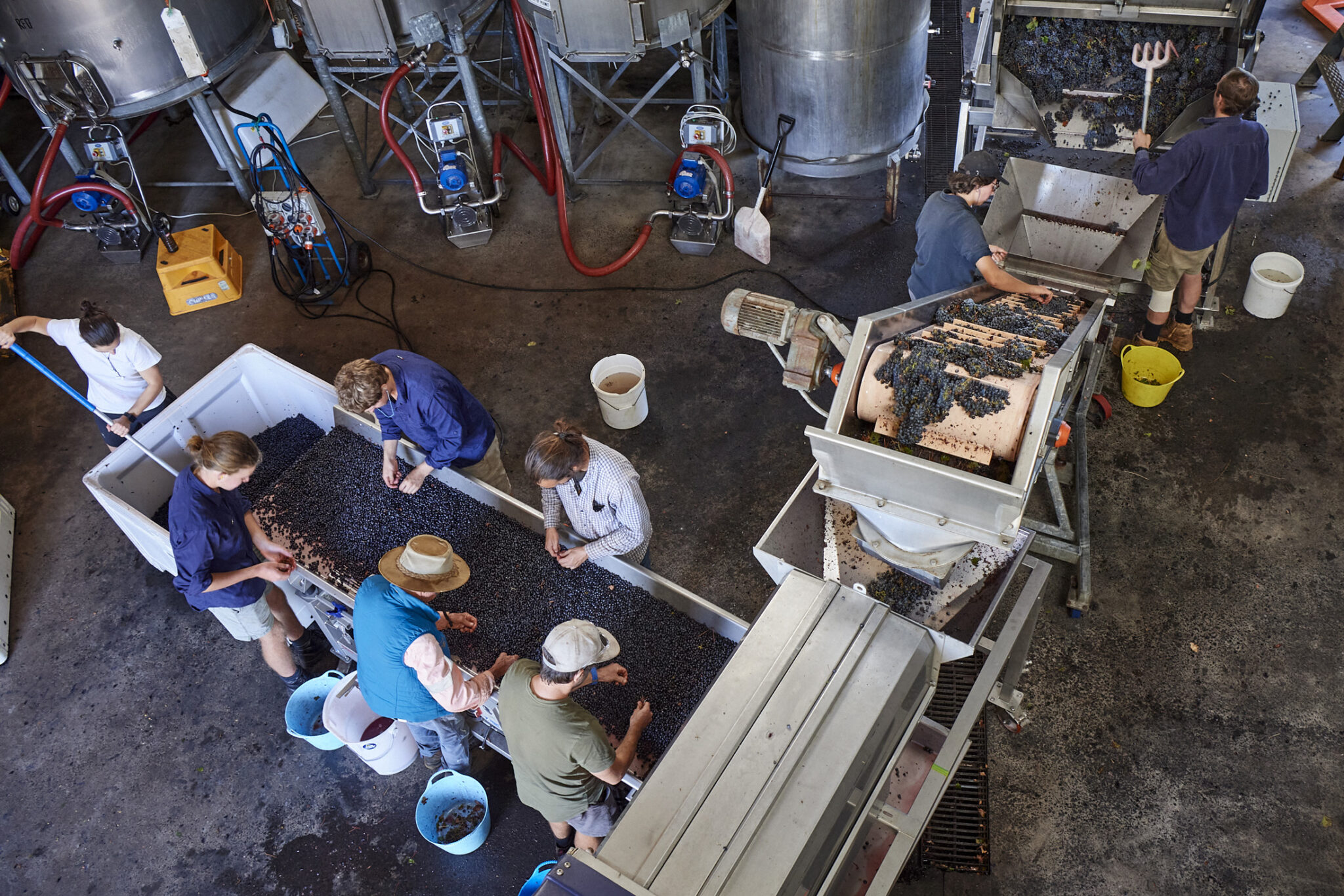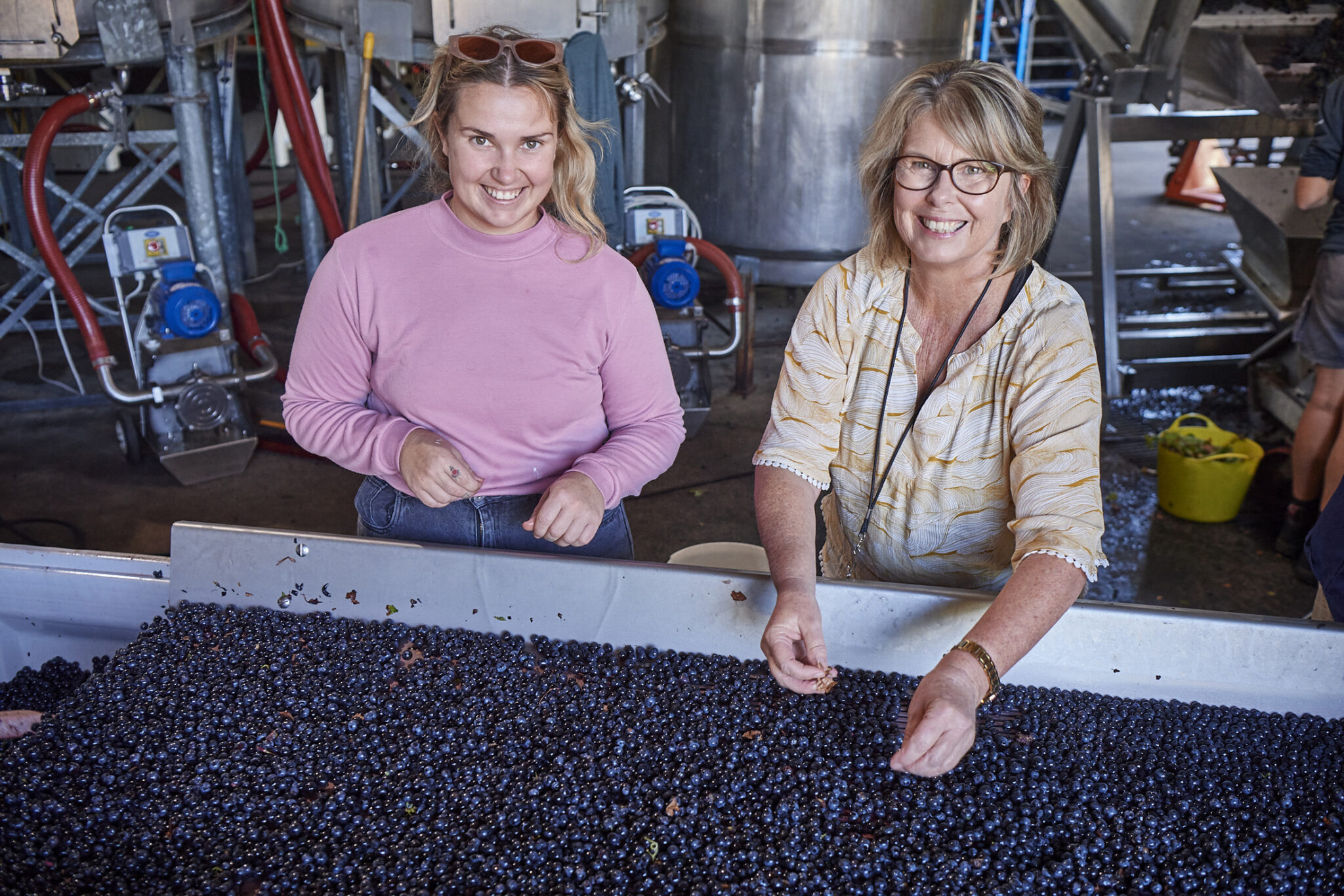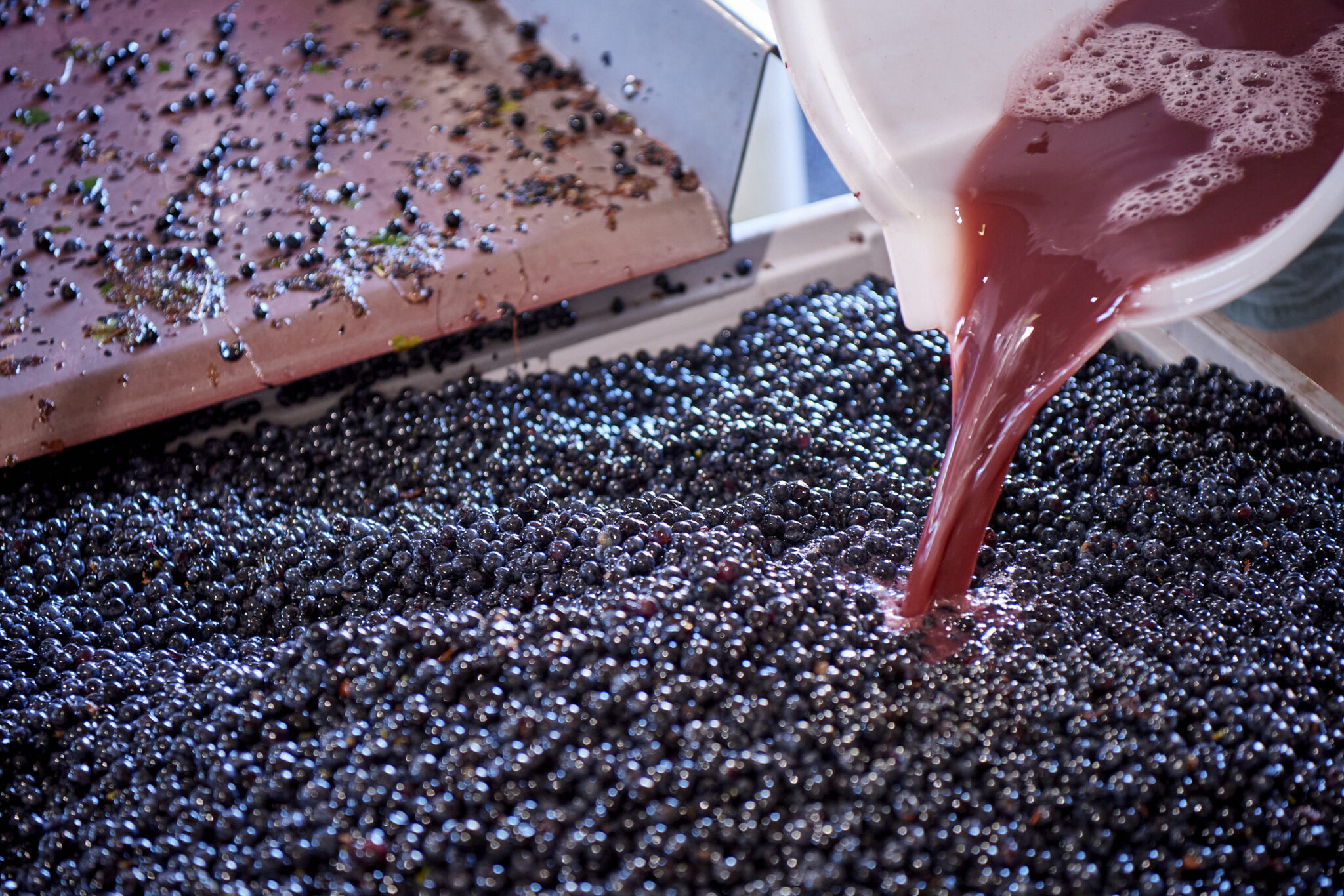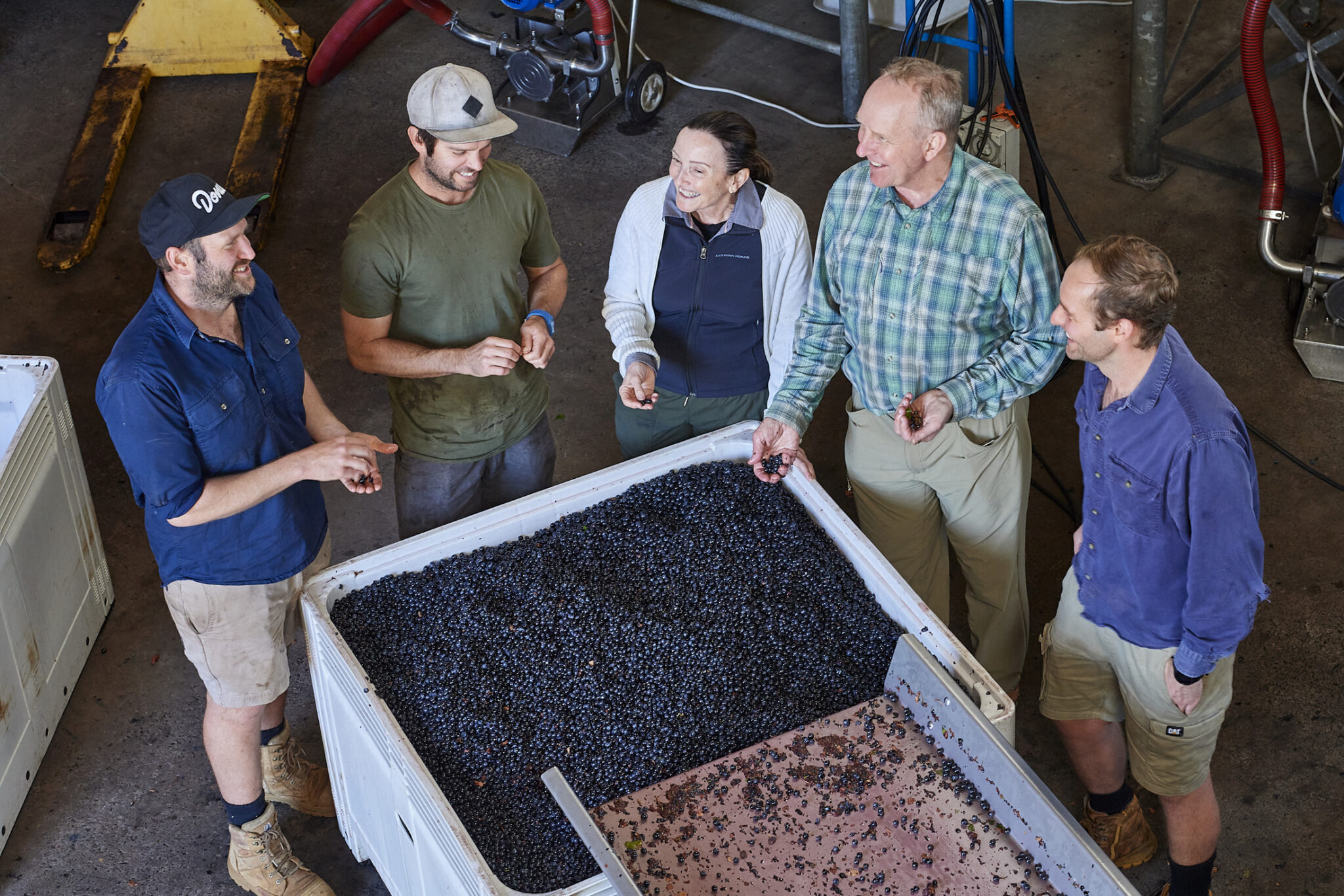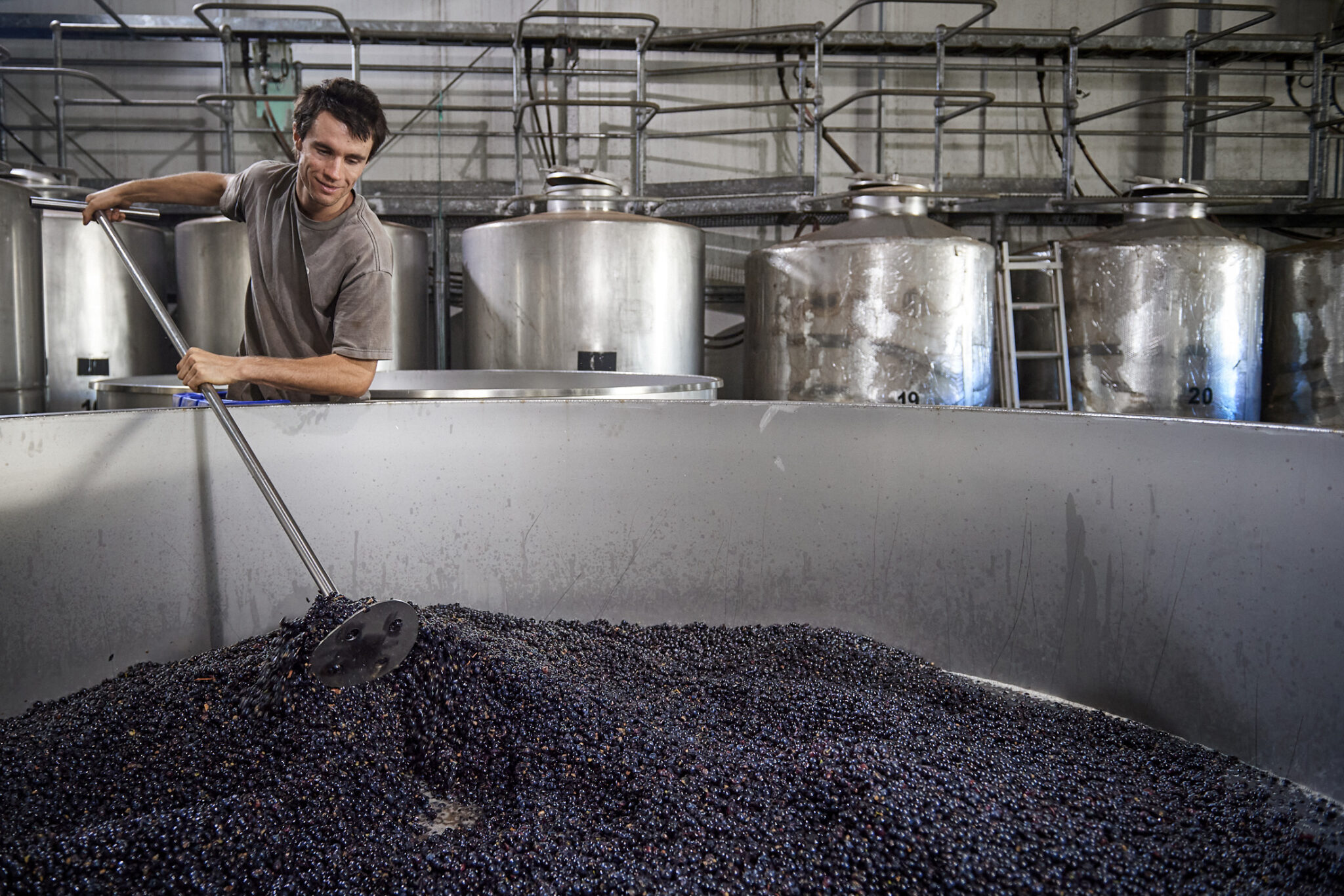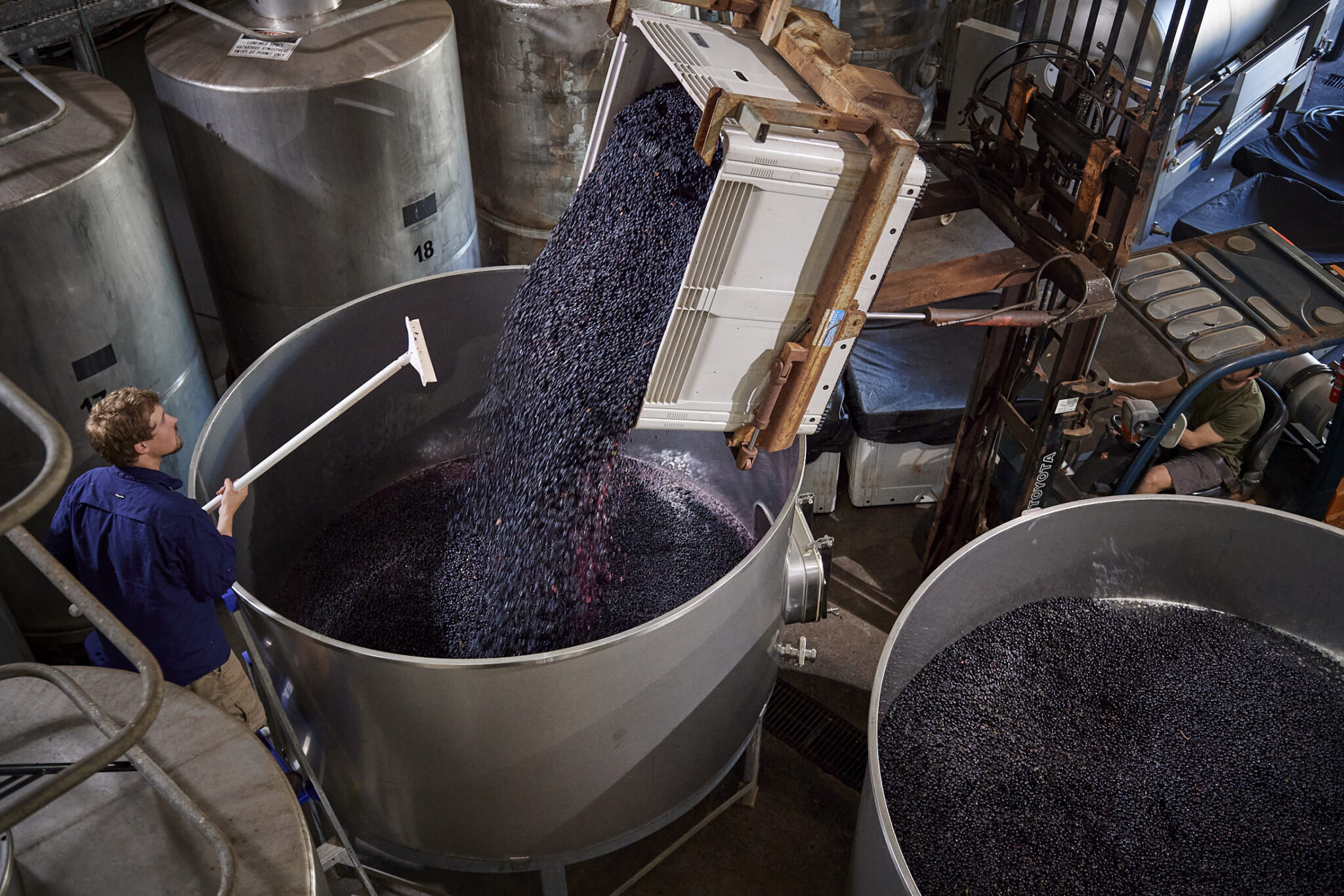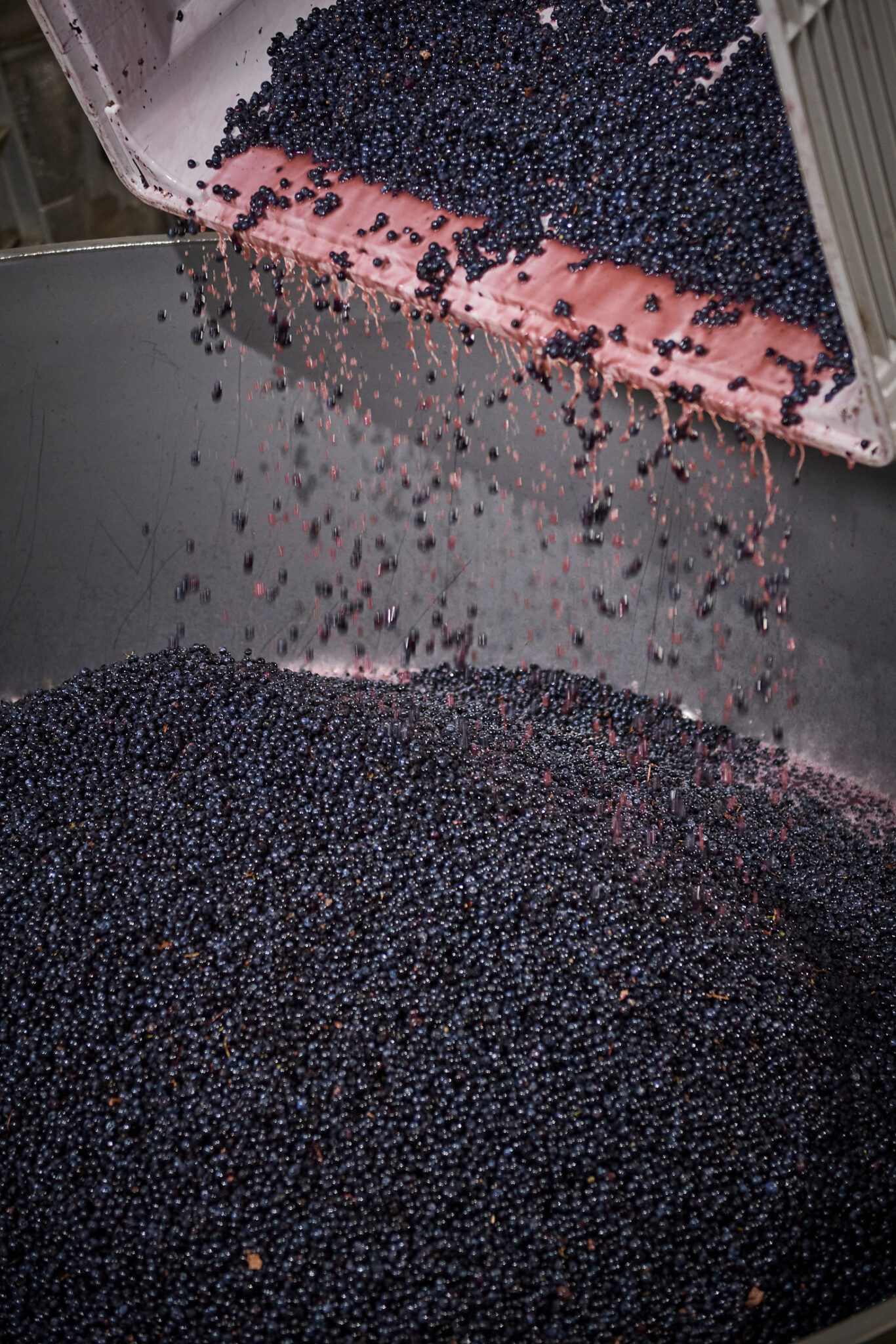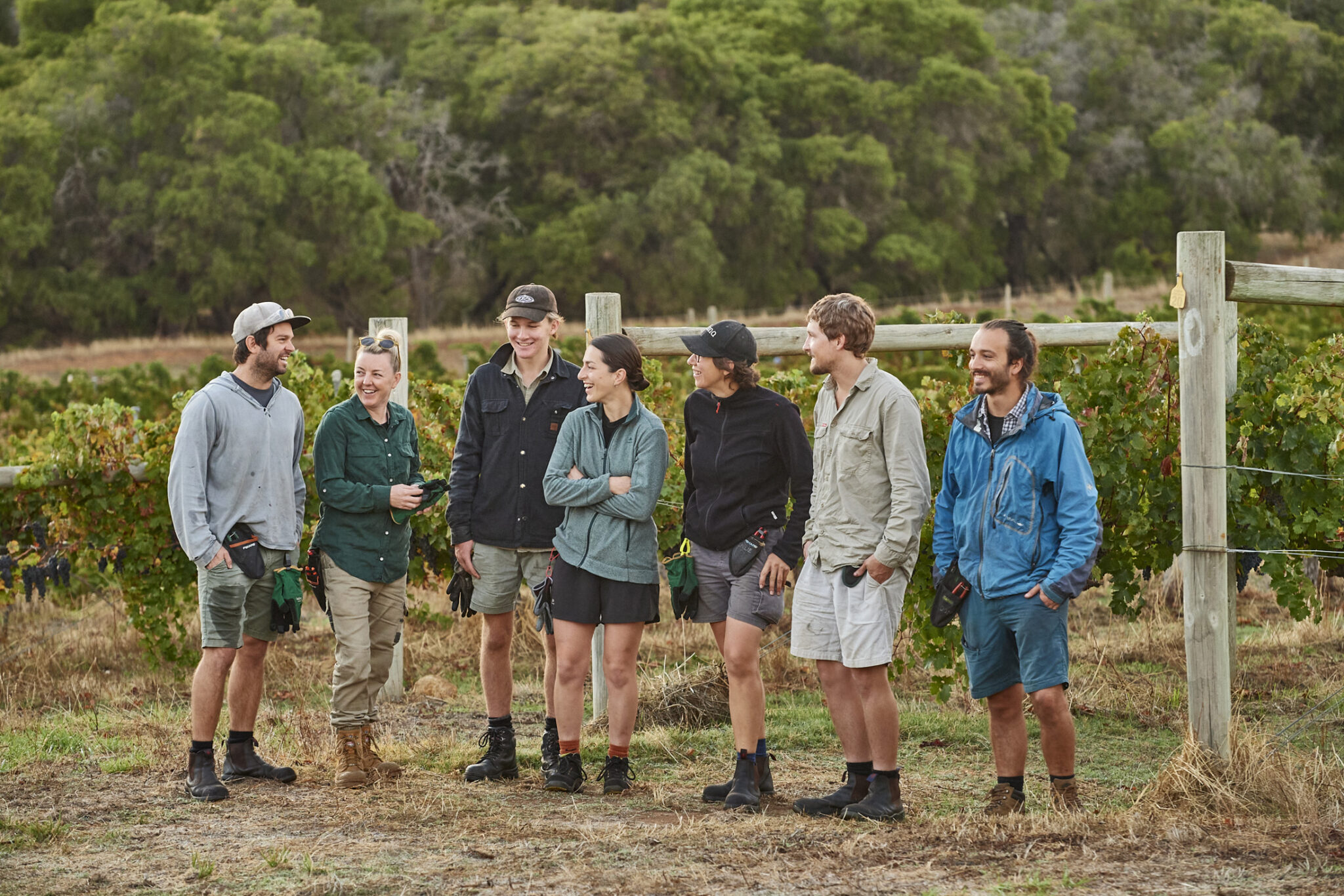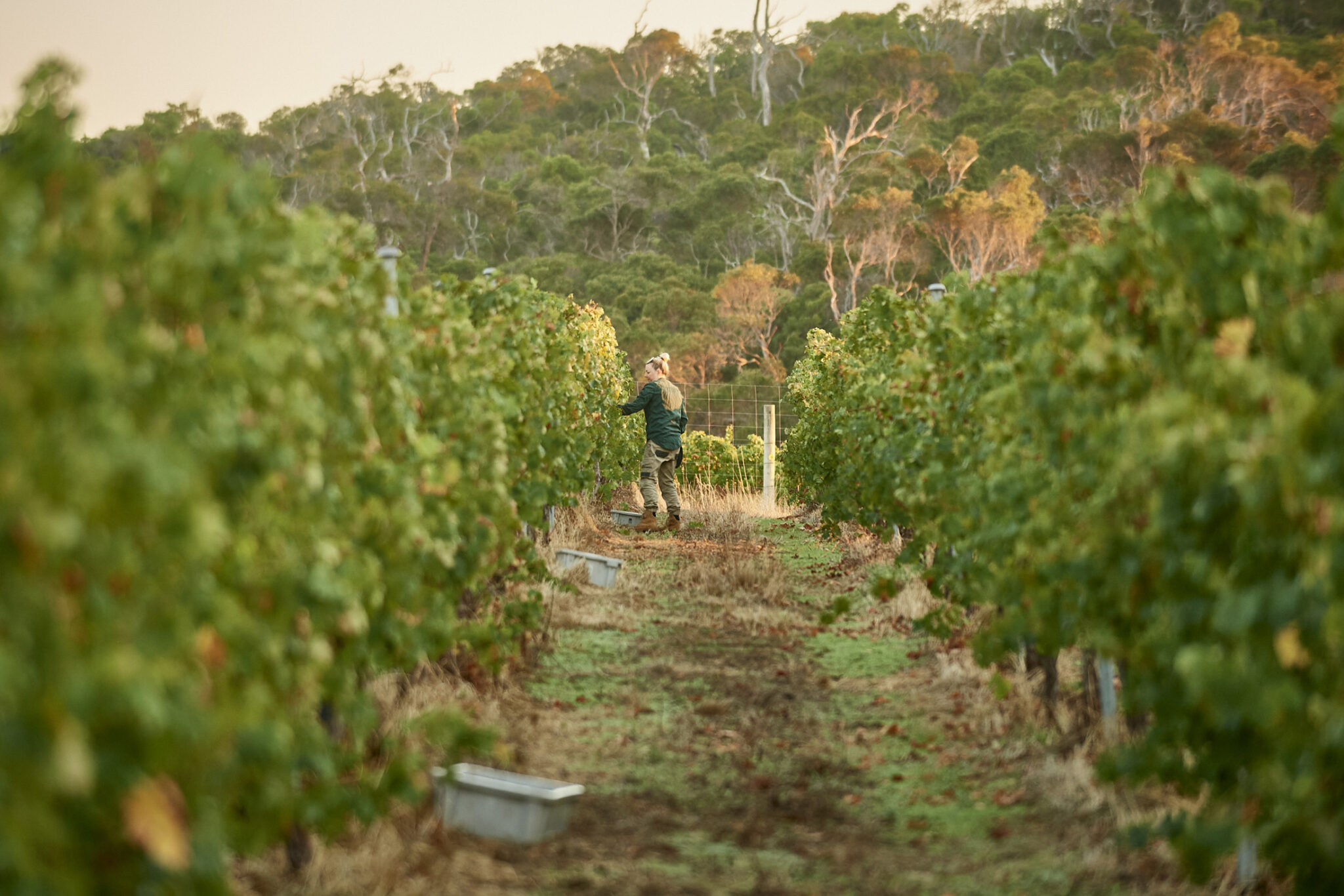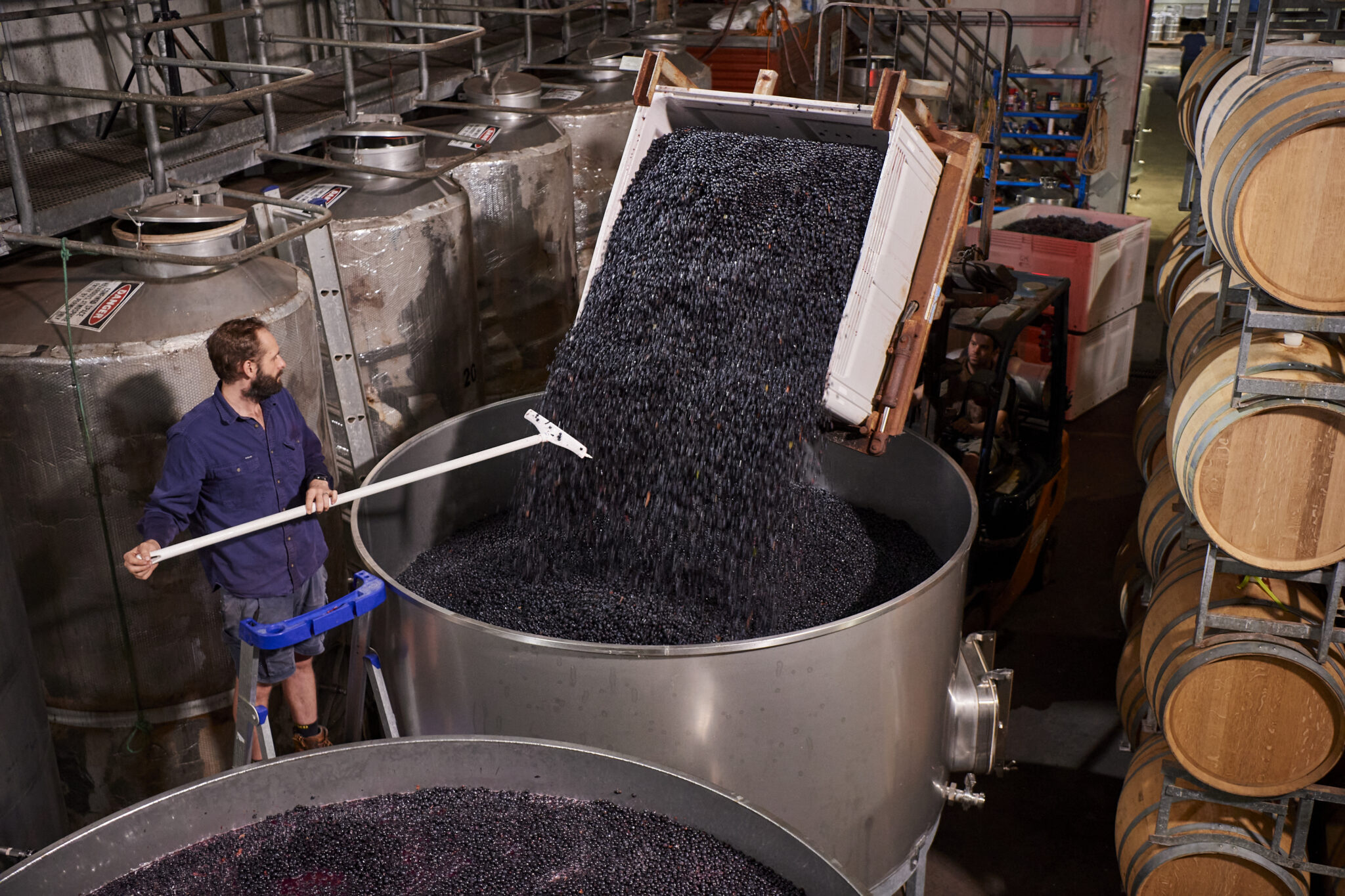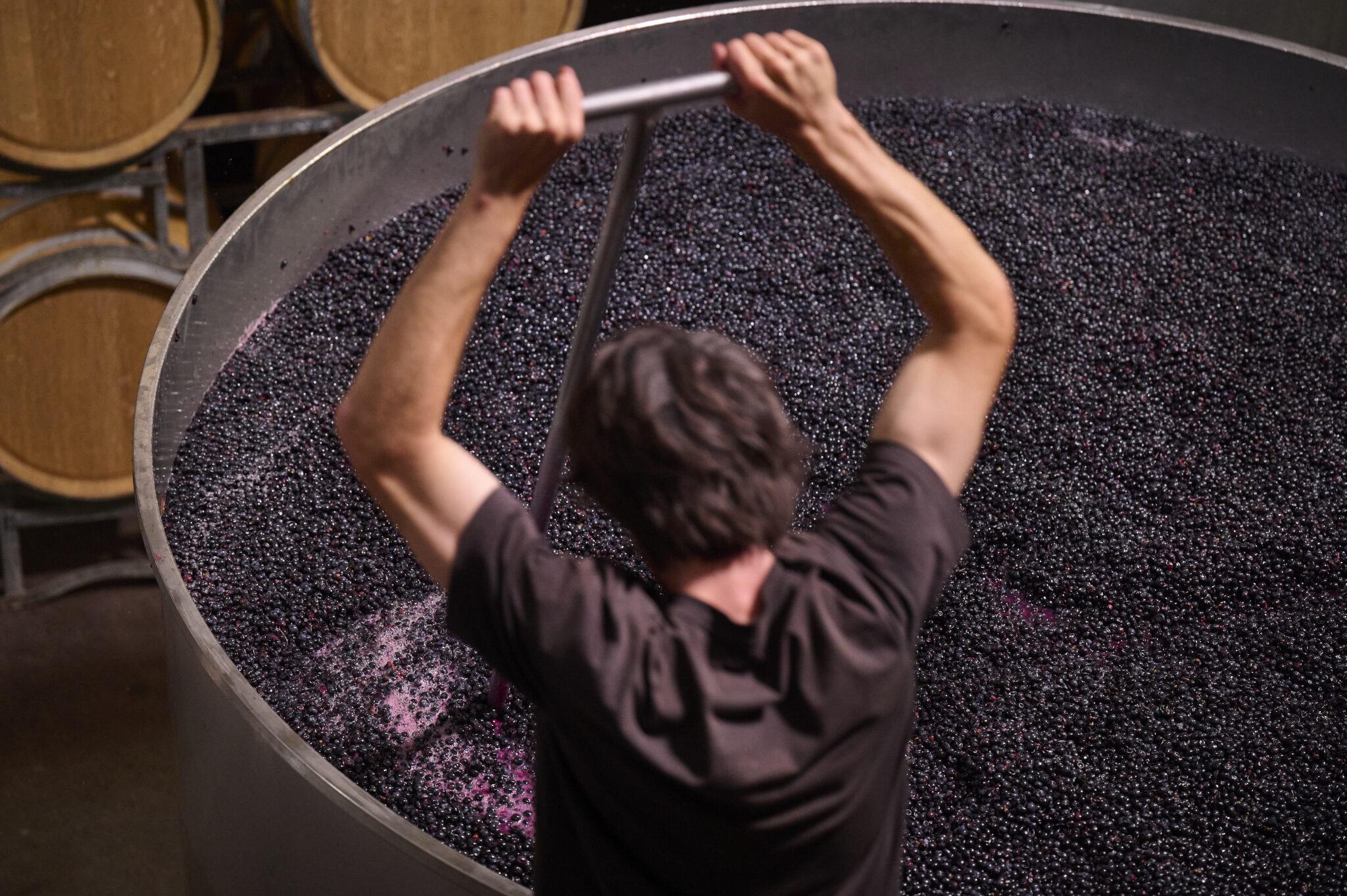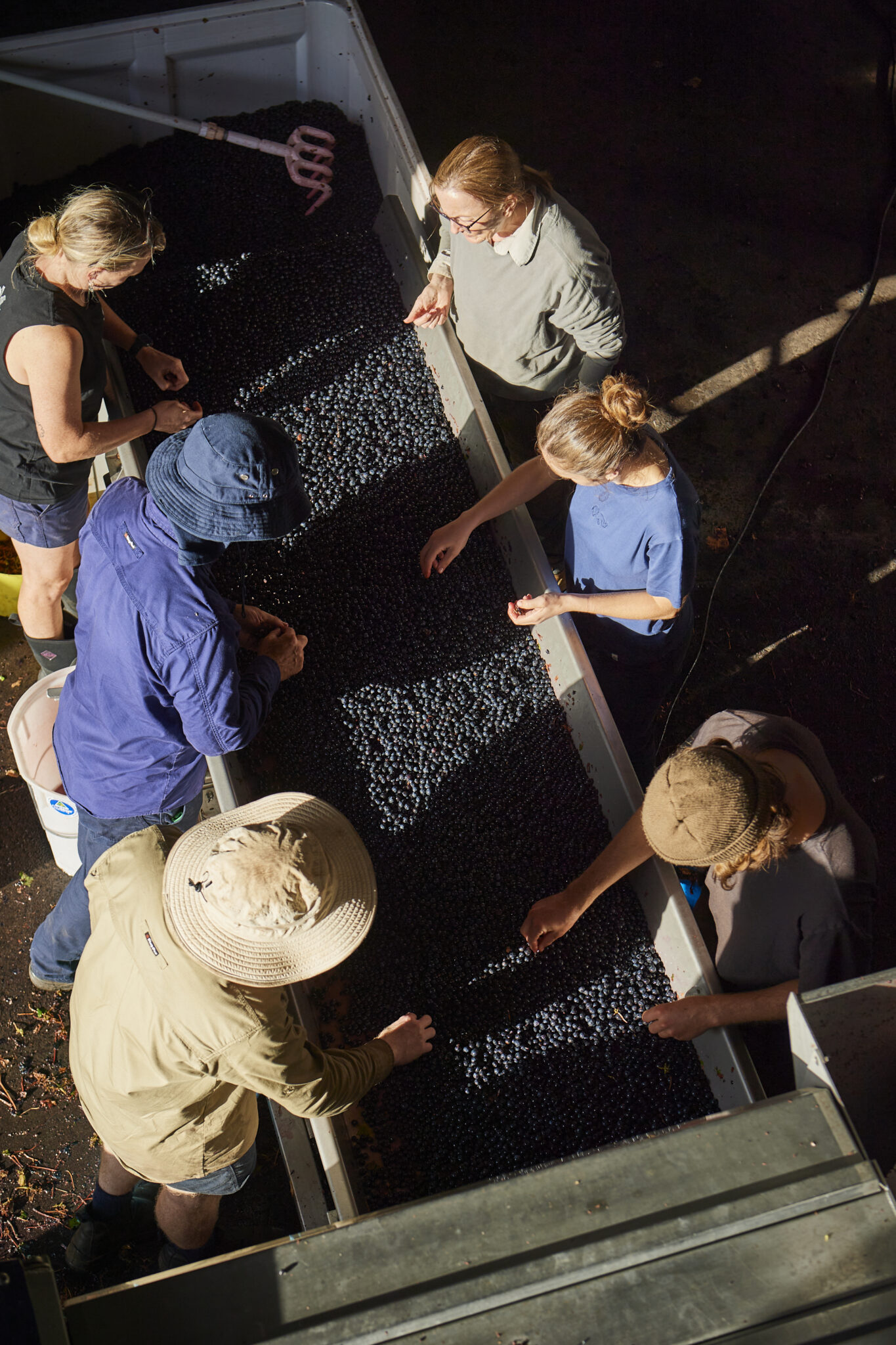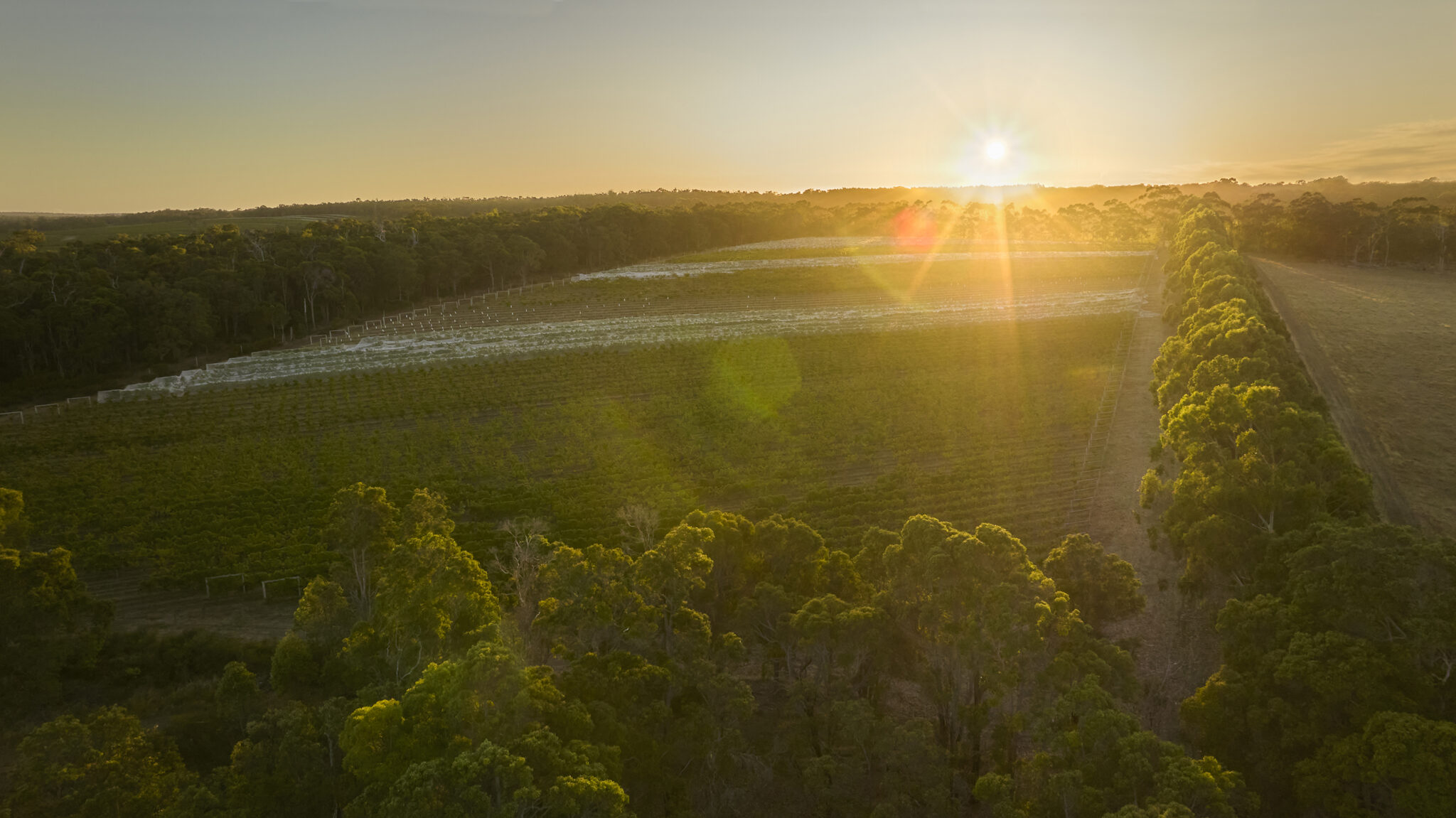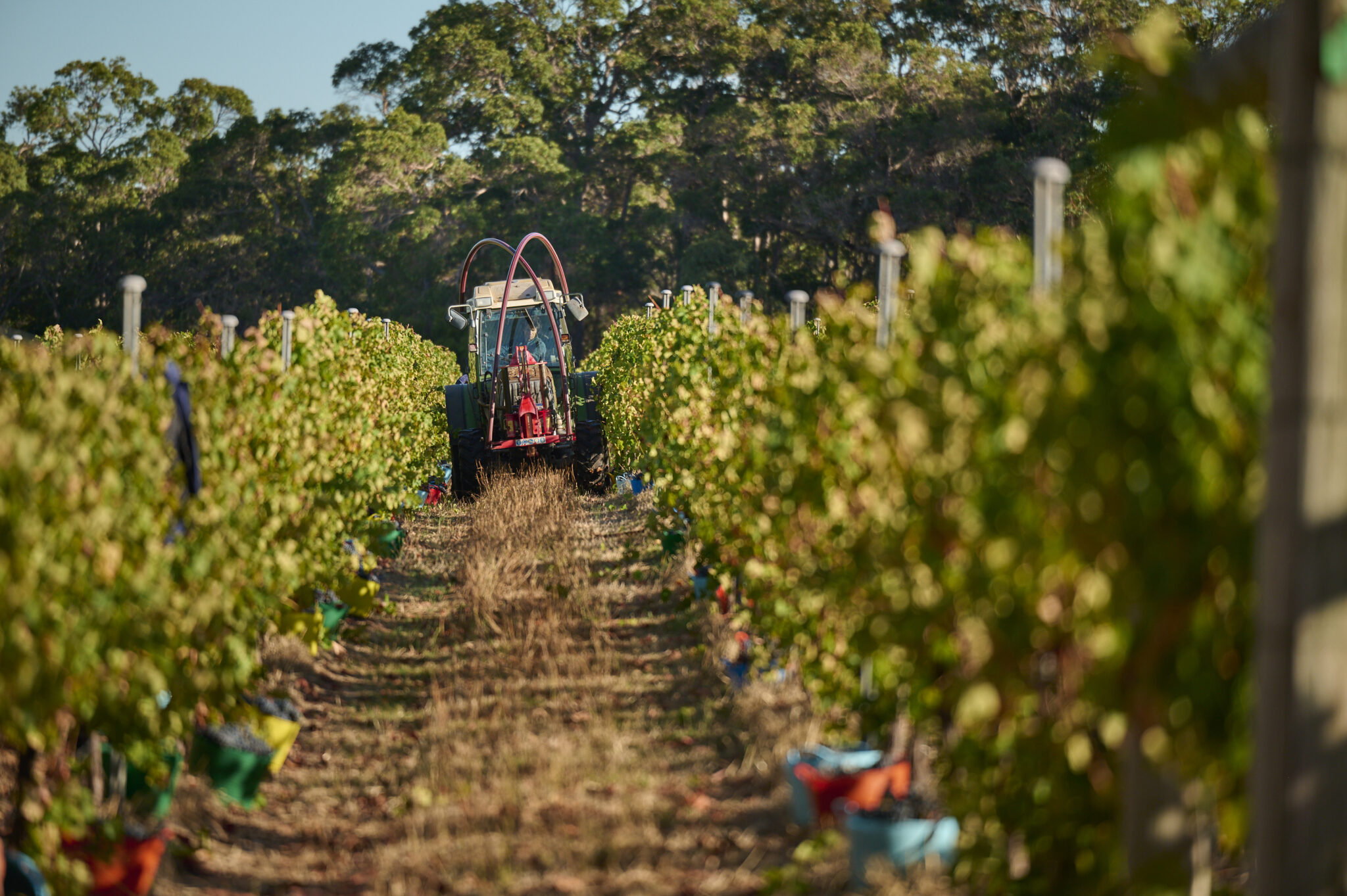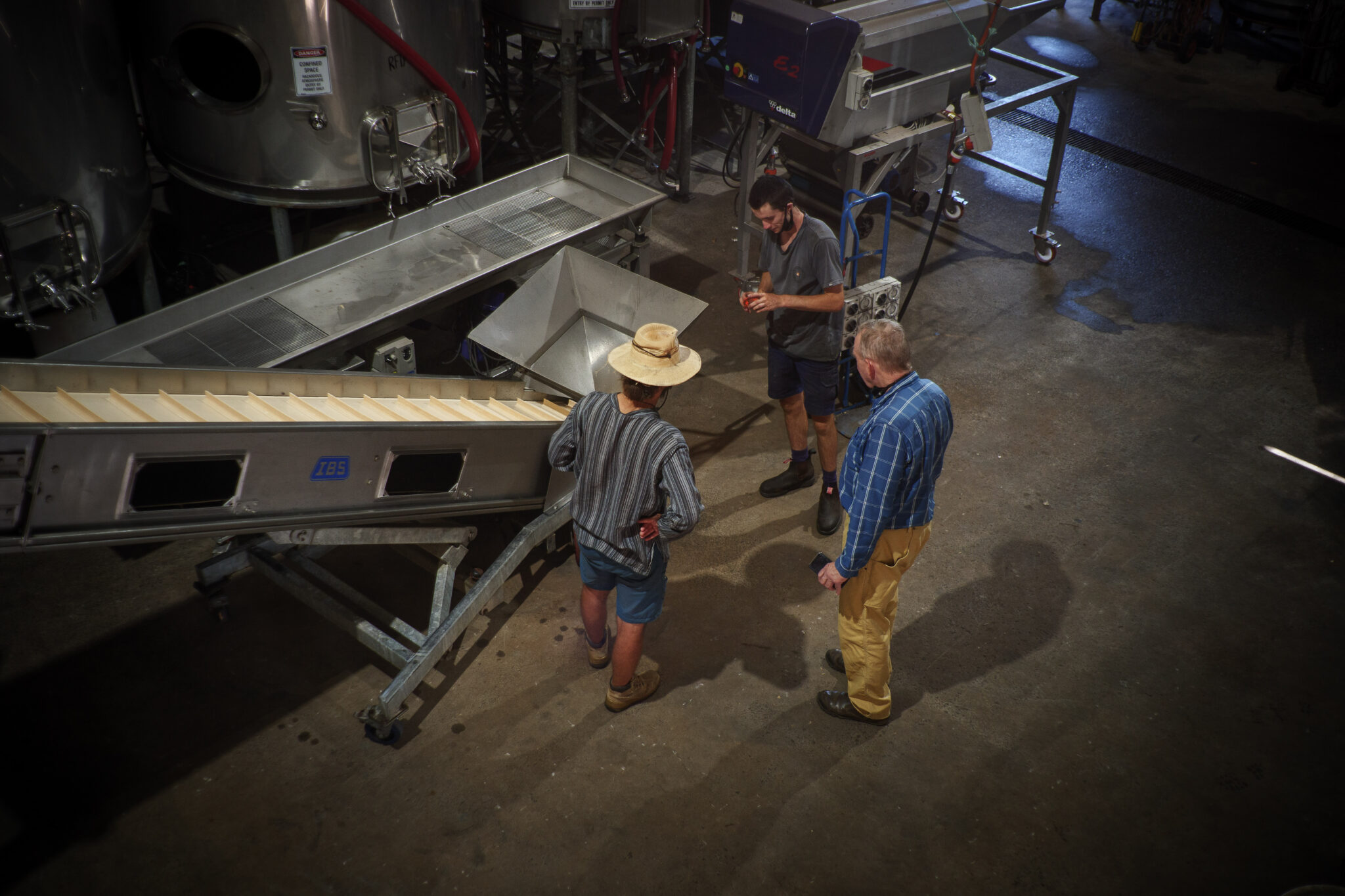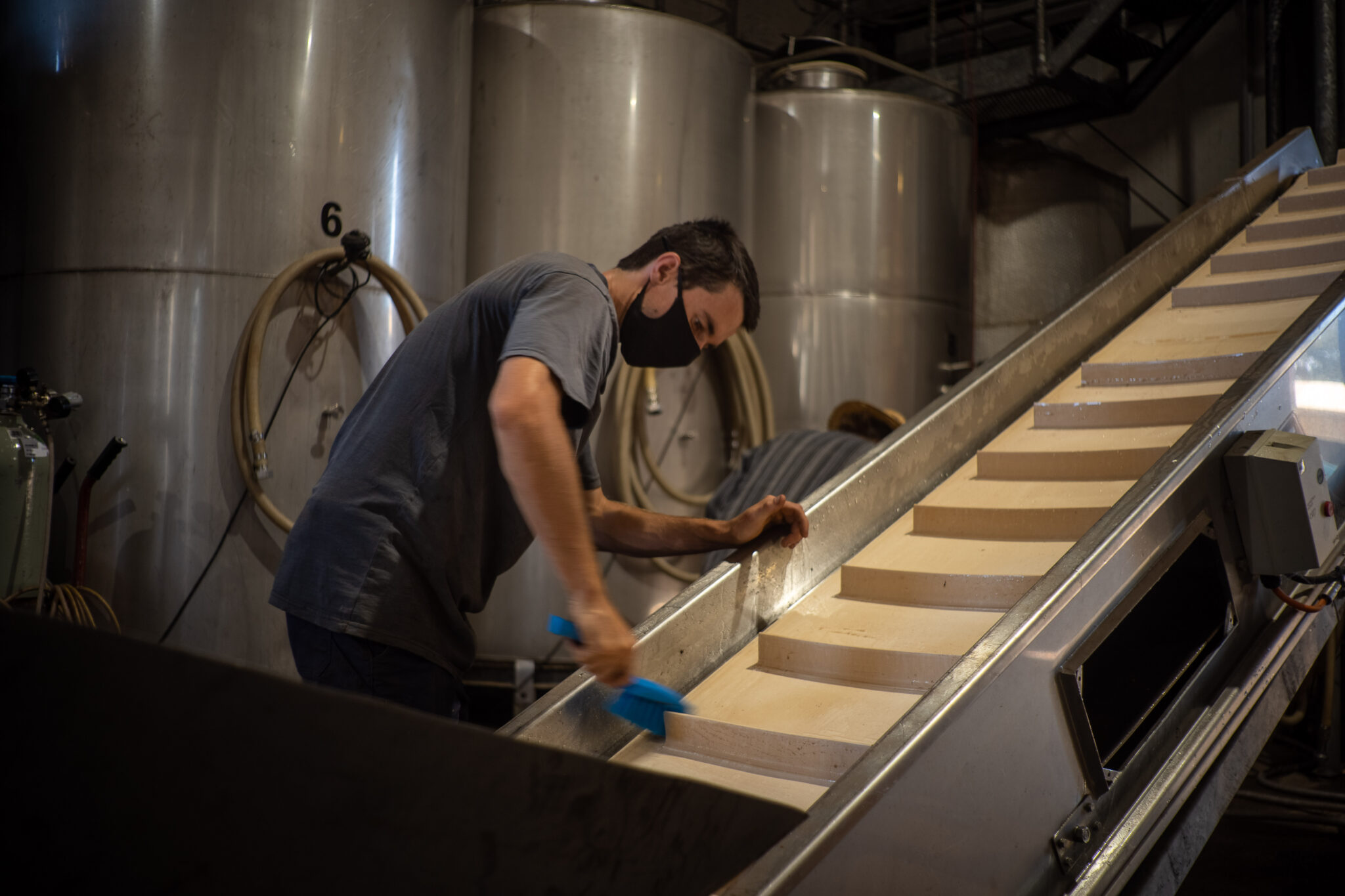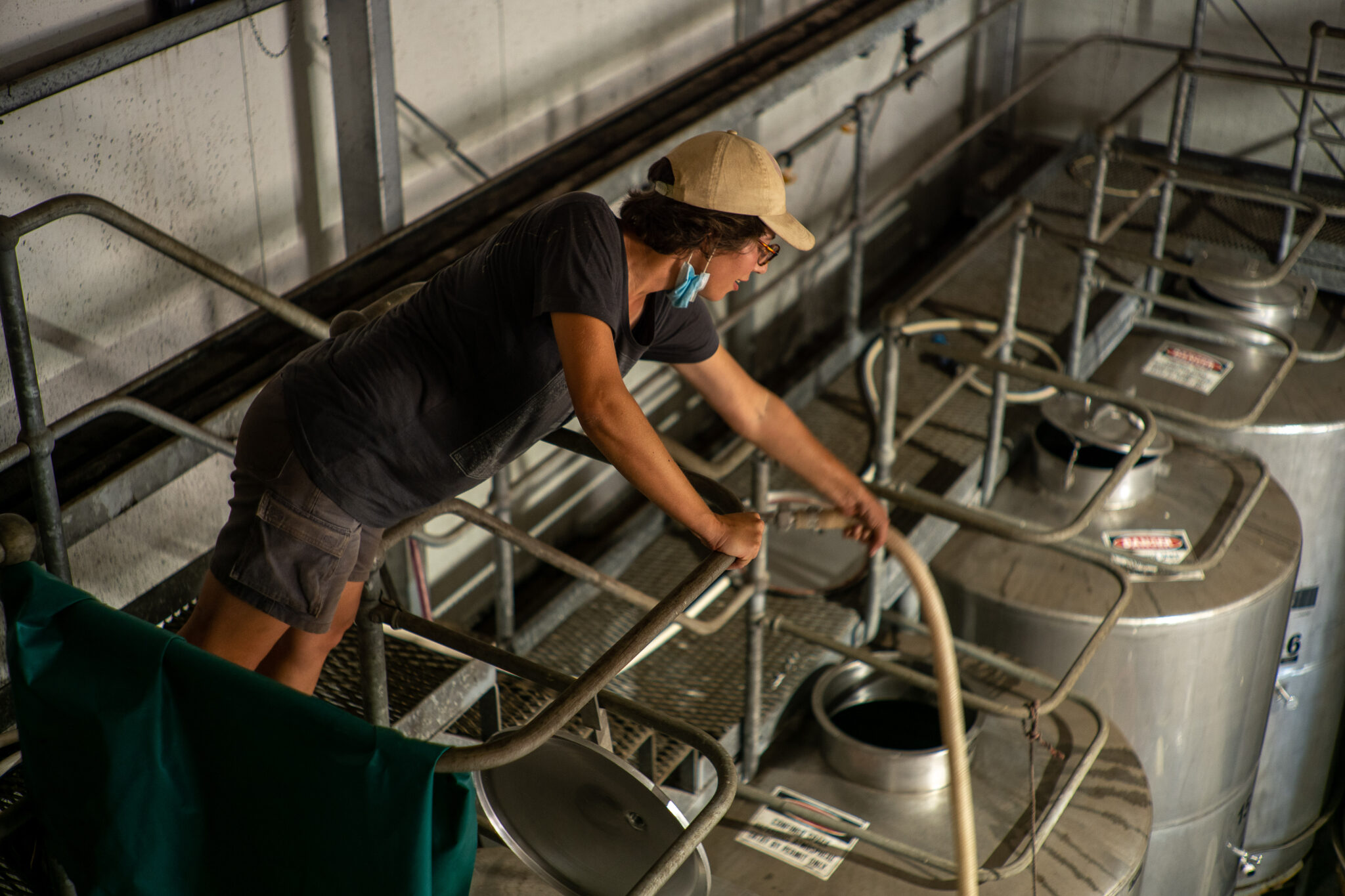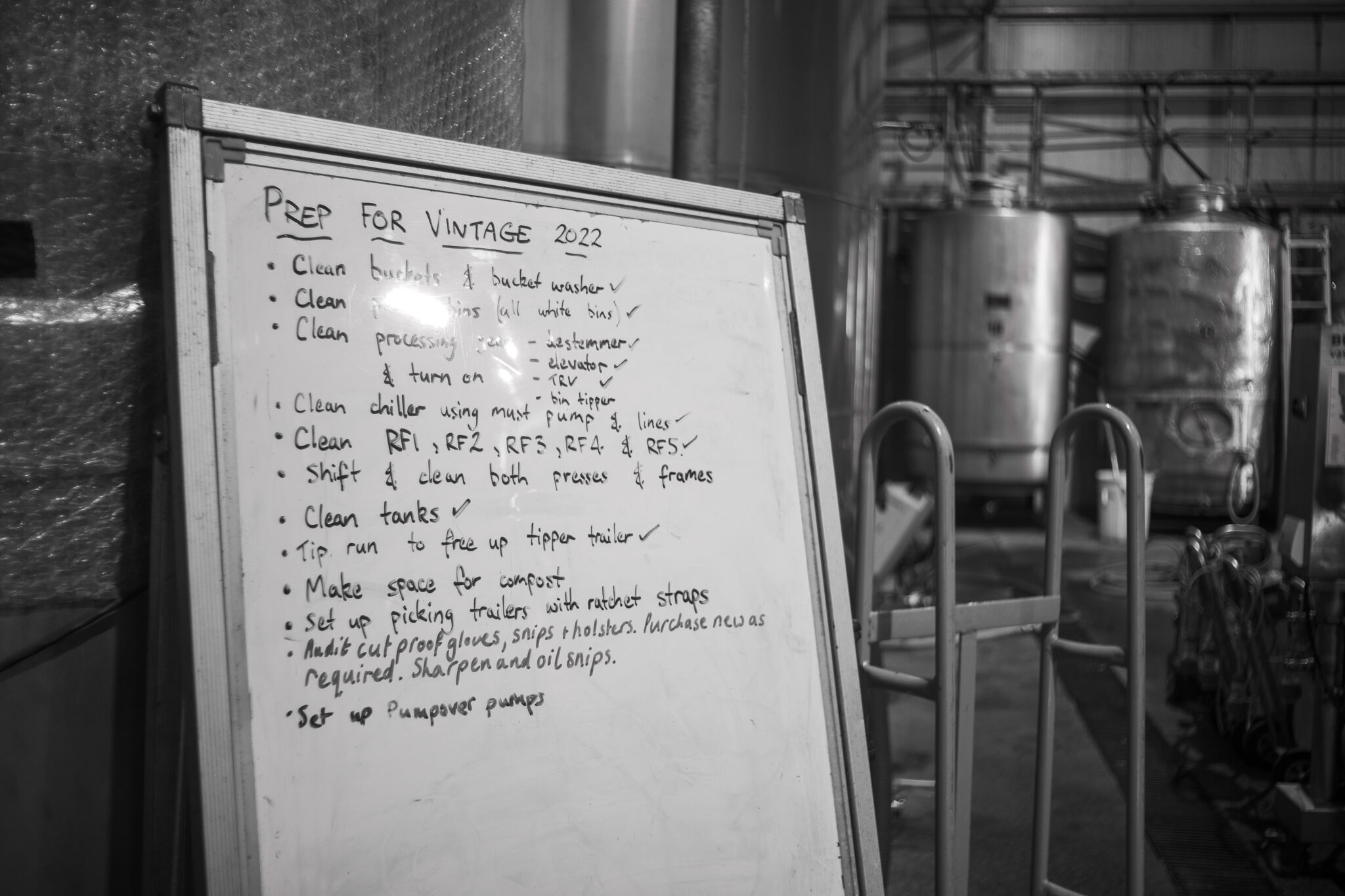Moss Wood Newsletter
Late Spring News Issue # 123 NOVEMBER 2024
2022 ribbon vale reds
Moss Wood Ribbon Vale 2022 Cabernet Sauvignon
Moss Wood Ribbon Vale 2022 Merlot
VINTAGE NOTES
In keeping with our normal practice of explaining our wine styles by focusing on the growing season in which we made them, it’s nice that we can publish a wonderfully simple report for the Ribbon Vale 2022 Cabernet Sauvignon and 2022 Merlot.
Mother Nature was in a very benign frame of mind.
Rainfall for calendar year 2021 was a record-breaking 1440mm, so our unirrigated vineyards had plenty of soil moisture. However, during the flowering period for the Cabernet varieties at Ribbon Vale, 13th November to 20th December, there were only 11 days of rain, which delivered 21mm. At the same time, there were only 5 nights when the temperature dropped below 8°C. Here’s an amusing fact – despite being well into summer, the lowest minimum of 4.3°C occurred on 19th December, by which time flowering was effectively finished.
These types of conditions would normally reward us with higher yields but that’s not how things turned out. Cabernet Sauvignon was down 27% to 4.92t/ha, Cabernet Franc was down 17% to 6.45t/ha, Malbec was down 26% to 3.97t/ha and Petit Verdot was down 56% to 1.16t/ha. Only Merlot managed to fly the flag, producing a yield of 8.04t/ha, 5% above average.
The explanation lies in the temperatures. The Ribbon Vale Cabernet Sauvignon experienced 1078 hours between 18°C and 28°C, so plenty of time in the preferred range for good ripening. However, we also received 118 hours above 33°C, and there were some warm days, especially Boxing Day 2021, when the mercury hit 41.2°C. Toasty warm! That’s the second warmest day we’ve recorded, the hottest being 25th February 1985, when we got to 41.5°C. The warm weather lasted through until mid-February and then eased in the autumn, to the point where Cabernet Sauvignon needed 132 days to reach full ripeness, 6 days longer than average. The point is, despite the mild finish, there was sufficient heat load earlier in the cycle to have a negative effect on the yield.
Overall, we were pleased with how things had gone and we had no problems with fungal disease or bird damage and so the fruit was in excellent condition when harvest began with Merlot on 4th March.
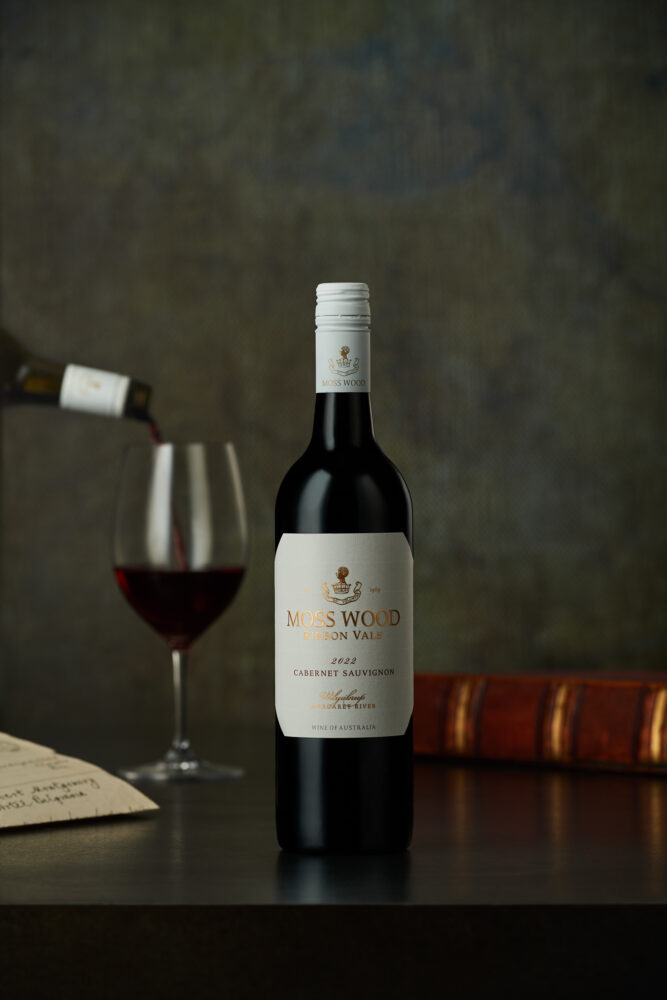
Production notes
As is always the case, picking was done by hand, then the fruit is delivered to the winery to be destemmed and sorted. Cabernet Sauvignon, Cabernet Franc, Petit Verdot and Malbec were transferred to small open tanks and seeded with multiple yeast strains for primary fermentation. Once this was underway each batch was hand plunged 3 times per day and time on skins varied from 13 to 16 days. Temperatures are controlled to a maximum of 32°C.
Merlot is treated slightly differently and placed into closed tanks, where it was chilled to 10°C and allowed to cold soak. After 48 hours, the cooling was turned off and the temperature returned to ambient. Once it had reached 18°C the batches were seeded with multiple yeast strains for primary fermentation and pumped over 3 times per day, with temperatures also controlled to 32°C.
After pressing to stainless steel tanks, each batch underwent malolactic fermentation and was then adjusted with SO2 and racked to barrel. All barrels were 228 litre French oak barriques and in the Cabernet Sauvignon, 19% were new and for the Merlot, 21% were new.
In September 2023, all the different batches were racked and blended in stainless steel. The final makeup of the Ribbon Vale Cabernet Sauvignon was 90% of that variety, plus 2.5% each of Cabernet Franc, Merlot, Petit Verdot and Malbec. For the Ribbon Vale Merlot, the blend was 86% of that variety, plus 7% each of Cabernet Sauvignon and Cabernet Franc.
The two blended wines were then returned to barrel, for the final period of aging, where they stayed until July 2024. In all, they spent 26 months in wood. They were racked to stainless steel and fining trials were prepared but none of the agents improved either of the wines and so both remain unfined. They were then sterile filtered and bottled on 2nd August, 2024.
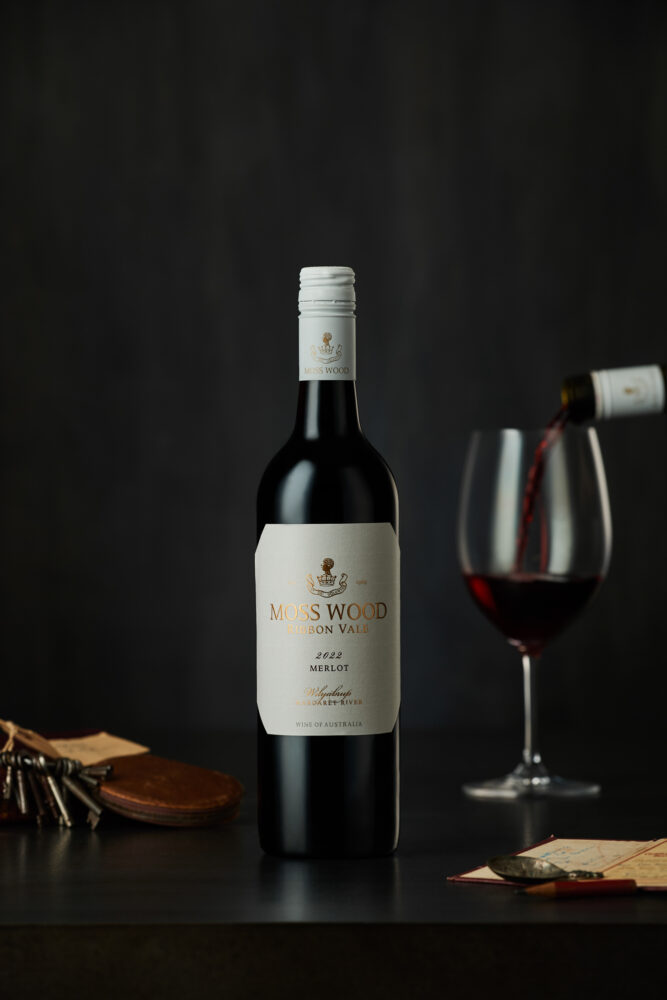
Moss Wood Ribbon Vale 2022 Merlot
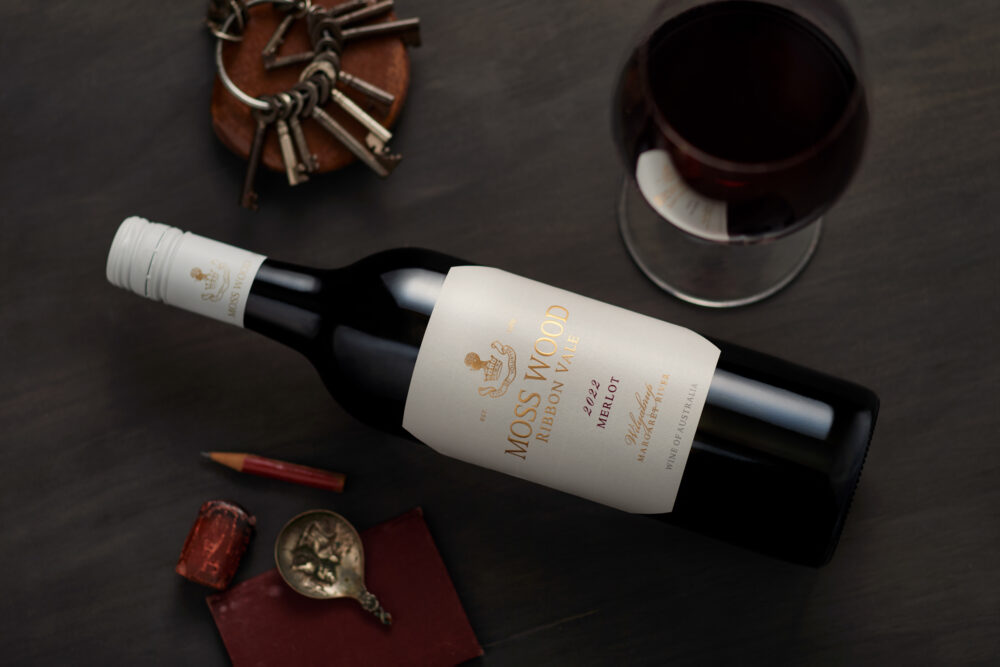
Tasting Notes
Colour and Condition:
Medium to deep ruby hue; bright condition.
Nose:
Lifted primary aromas of raspberry, dark cherry, licorice, dark jubes, fruit leather, tamarillo, Tabasco, violets, musk and stewed plum. Background notes of dried roses, dried herbs, earth, cedar, tar, cinnamon, olive tapenade, mushroom, toasty oak, fresh baked fruit bread and some charry, toasty oak.
Palate:
The wine is medium to full bodied, with generous red and black fruit flavours, consisting of blackberry, raspberry, boysenberry, strawberry, musk, plum, cherry, fruit leather, star anise and cinnamon. Lifted acidity gives it vibrancy, and tannins are quite concentrated, almost dusty and gravelly in texture and there is subtle vanilla and toasty oak on the finish.
CELLARING
The 2021/22 season has much in common with 2008, as both shared a warm summer followed by the early onset of a mild autumn, allowing the fruit to ripen gradually and retain more lifted fragrances. With this in mind, we’re very confident of the aging potential of 2022 Ribbon Vale Merlot and encourage cellaring for at least 10 years, to allow some bottled aged complexity. However, full maturity will need at least another decade and we anticipate the wine reaching its peak around 25 years of age.
| Wine Facts | |
|---|---|
| Median Harvest Date | Merlot – 4th April, 2022 Cabernet Franc – 5th April, 2022 Cabernet Sauvignon – 14th April, 2022 |
| Mean Harvest Ripeness | Merlot – 13.0⁰ Be Cabernet Franc – 13.1⁰ Be Cabernet Sauvignon – 13.3⁰ Be |
| Yield | Merlot – 8.04 t/ha Cabernet Franc – 6.45 t/ha Cabernet Sauvignon – 4.92 t/ha |
| Ripening Time from Flowering to Harvest | Merlot – 127 days Cabernet Franc – 126 days Cabernet Sauvignon – 134 days |
| Bottled | 2nd August, 2024 |
| Blend | 86% Merlot 7% Cabernet Franc 7% Cabernet Sauvignon |
| Alcohol | 14.0% |
Moss Wood Ribbon Vale 2022 Cabernet Sauvignon
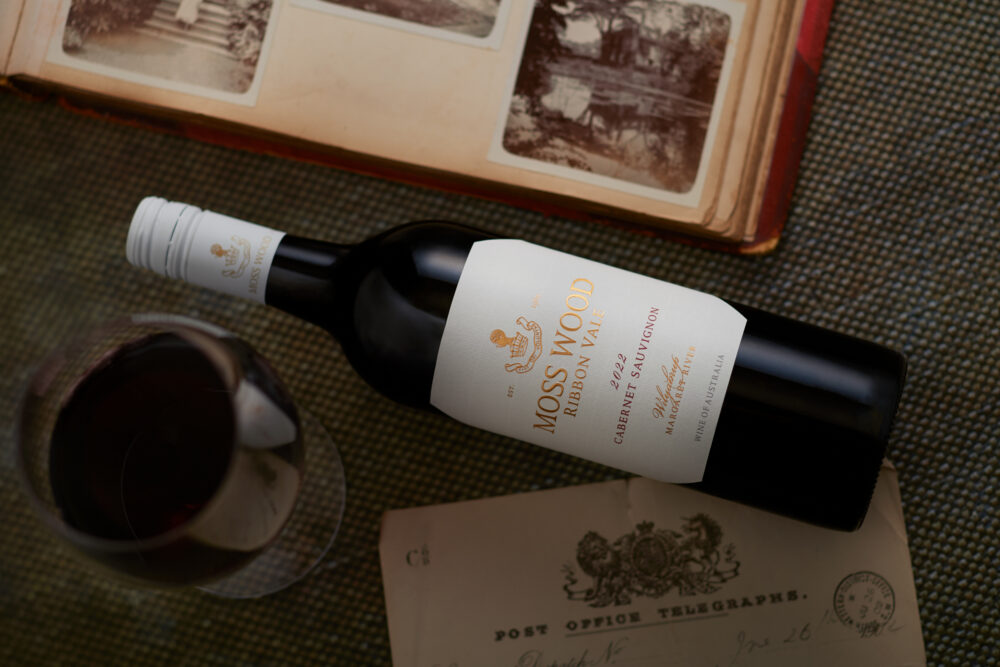
Tasting Notes
Colour and Condition:
Deep crimson, brick red hue; bright condition.
Nose:
This is dominated by dark fruits - blackberry, mulberry, black currant, and plum, with variations on that theme like blueberry yoghurt, Black Forest cake, dark licorice and jubes. Behind these are the complex notes such as violets, cedar, tobacco, tar and toasty oak.
Palate:
The wine has full body, with intense black fruit flavours of blackberry, mulberry, boysenberry, cassis and dark cherry, plus background notes of black olive, licorice, dark chocolate, vanilla custard, tobacco, cedar and dried spices like cinnamon and nutmeg. Tannins and acid are very well balanced, with a presence running through the mid and back palate. Everything is well integrated giving a soft, plush mouthfeel.
CELLARING
Continuing the comparison with 2008, where the Cabernet Sauvignon aligns even more closely, we certainly encourage those with the opportunity to cellar the 2022 Ribbon Vale. It will take at least 10-15 years to develop some bottle bouquet and a further 10-15 years beyond that to complete the process. Beyond 30 years of age, there will be no rapid decline and it should continue to drink well into its 5th decade.
| Wine Facts | |
|---|---|
| Median Harvest Date | Cabernet Sauvignon – 14th April, 2022 Cabernet Franc – 5th April, 2022 Merlot – 4th April, 2022 Malbec – 12th April, 2022 Petit Verdot - 12th April, 2022 |
| Mean Harvest Ripeness | Cabernet Sauvignon – 13.3⁰ Be Cabernet Franc – 13.1⁰ Be Merlot – 13.0⁰ Be Malbec – 13.2° Be Petit Verdot 13.5° Be |
| Yield | Cabernet Sauvignon – 4.92 t/ha Cabernet Franc – 6.45 t/ha Merlot – 8.04 t/ha Malbec – 3.71 t/ha Petit Verdot 1.16 t/ha |
| Ripening Time from Flowering to Harvest | Cabernet Sauvignon – 134 days Cabernet Franc – 126 days Merlot – 127 days Malbec – 131 days Petit Verdot 129 days |
| Bottled | 2nd August, 2024 |
| Blend | 90% Cabernet Sauvignon 2.5% Merlot 2.5% Cabernet Franc 2.5% Malbec 2.5% Petit Verdot |
| Alcohol | 14.0% |
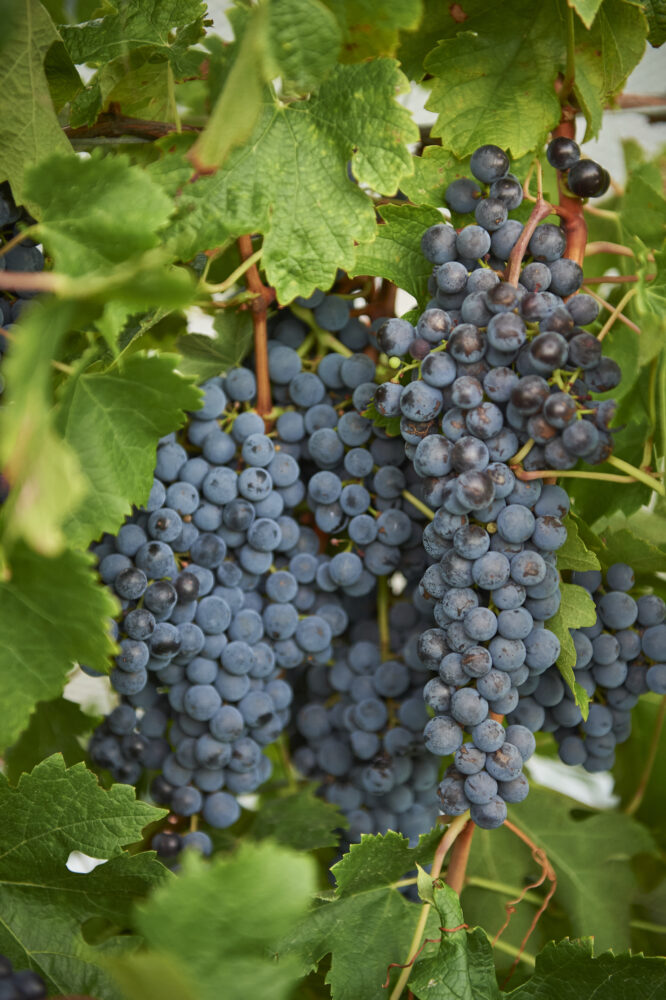
Vineyard Changes at Ribbon Vale
Keen-eyed readers may have picked up on the very low yields for the Petit Verdot and wondering why this is the case. Certainly, this variety can produce very inconsistent crops and of all the Cabernet varieties, suffers quite badly in adverse conditions. However, there is a further explanation as to what is happening at Ribbon Vale.
Wine companies are faced with an interesting management challenge. On the one hand, consumer wine style preferences are always changing. Our industry is subject to fad and fashion, just like all consumer goods. These changes frequently take place over brief time spans, often as short as one year. On the other, in our industry, where a new vineyard takes 6 years to come into production, the short term is more like 20 years. This means we’re not particularly nimble – we have a Titanic-like turning circle.
If tastes change, how do we manage it?
To improve and reduce the response time we can graft new varieties on to the existing stocks. This takes the vineyard out of production for a much shorter time, typically 2 years. This is not especially quick but it’s certainly better than 6 years.
At Ribbon Vale, the original plantings were between 1977 and 1985, and during that period, there was significant demand for both Semillon and Sauvignon Blanc. No surprise then they made up nearly 70% of the vineyard. Sadly, since 2010, demand for both wines has waned significantly and we had to make some hard decisions as to what we should do. In the perfect world, a vineyard would only be replaced when it has become so old that its yields are no longer profitable but that’s not the world we live in.
Initially, we tried grafting, using both Cabernet Sauvignon and Petit Verdot and we quickly learned that Sauvignon Blanc is a good rootstock and the grafted vines make excellent progress. However, Semillon requires very careful technique and without which, success rates are low. This is the cause of the low crop in the latter because only a very low percentage of the grafts have been successful. We have since concluded that as painful as it is, the best solution is to pull the old vines out and completely replace the vineyard.
VINEYARD UPDATE FOR SPRING 2024
Without wanting to tempt the fates too badly, we are pleased to report a good start to the 2024/25 growing season. After a dry start to the year, we had excellent rainfall from the beginning of May and have almost made up the deficit. Certainly, soil moisture levels are excellent and the vines have good shoot growth. This means we’ve got a busy team marching up and down the rows making sure we keep this under control with shoot positioning.
There were some reasonable storms coming through Wilyabrup during September but we avoided sustained high winds and shoot damage was minimal. During the first week some nasty thunderstorms with hail gave us a bit of a scare but luckily, they passed to the south. Luck really is a fortune when it comes to hail. These were accompanied by 3 days of low maximum temperatures, which included a Melbourne-like 12°C on the 5th.
At the time of writing, flowering is just getting underway and we’re enjoying a succession of sunny days, with just a little bit of rain. If this continues, we’re hopeful of good-sized bunches. In other good news, our scouting indicates we have no symptoms of fungal disease. Hopefully we can keep it that way.
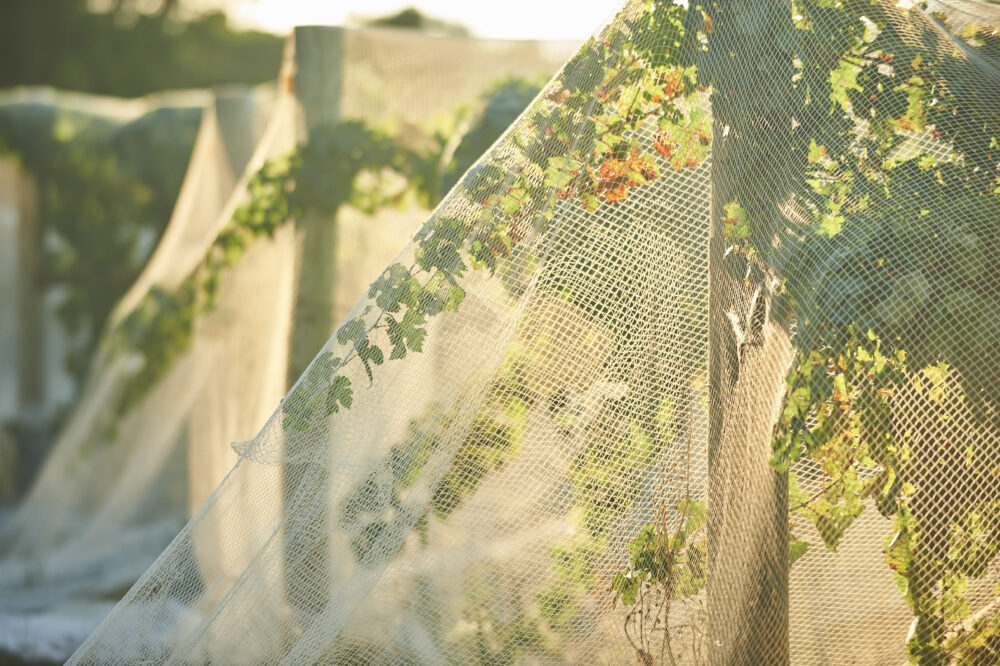
Order
OUR WINES:
Contact
MOSS WOOD:
Location: 926 Metricup Road, Wilyabrup WA
Postal: PO Box 225, Cowaramup WA 6284
Phone: +61 8 9755 6266
Fax: +61 8 9755 6303
Follow us on
SOCIAL MEDIA:

